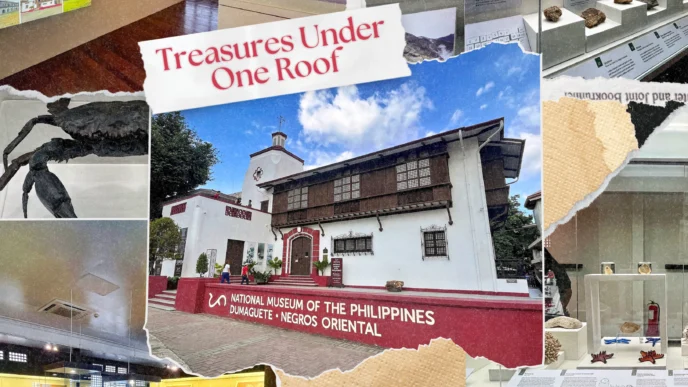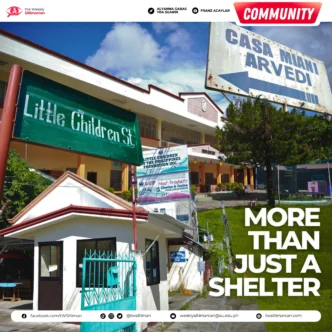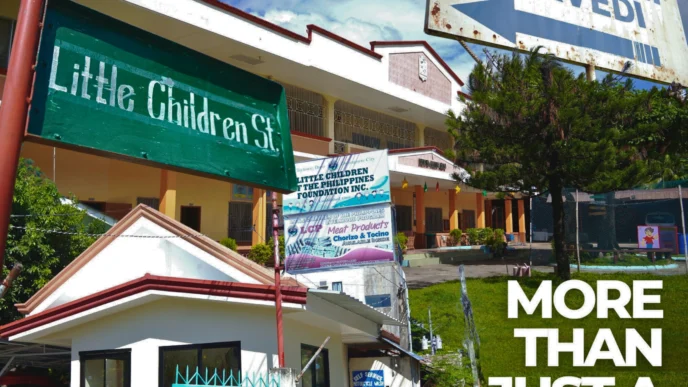By Genno Rabaya & Zarelle Villanzana
Dgte pedicab drivers face road competition, new transpo system
Three-wheeled vehicles sprawl across the streets of Dumaguete City with the capacity to carry around six passengers at a time. Steering the pedicabs are its drivers who are capable of memorizing almost every corner of the city. Residents and tourists often regard it as the primary mode of transportation—the pedicab system.
Pedicab drivers navigating the university town habitually look for particular targets along the streets—the student passengers. For Jefrey Deguit, 47, he and his vehicle even enter the gates of Silliman University for his passengers’ convenience.
“Kanang naa koy [gikan] sa Silliman na pasahero, adto man ko didto musulod. Sa katong Medical Center dapit, so dili nako kailangan musubay dinhi. Adto rako didto, lusot ko sa may church. Kay gipagamit raman na diha sa kuan, atong mag one-way na,” shared Deguit, a pedicab driver since 1998.
(When I have a passenger from Silliman, I enter inside there (the campus). Around the Medical Center area, I don’t have to pass by the main road. I just go there, exiting through the church. Because they let us use it, when the roads become one-way.)
The peak hours of 7 a.m., 11 a.m., and 4 p.m. often mean congested roads where pedicabs and private vehicles meet. Deguit says the lack of proper loading and unloading systems worsens the traffic.
According to him, “Mas ma-chada jud unta og kanang government, [mag-install ug] murag kanang sa drive-through, unya dira ka unload [pasahero]. Parehas sa tiangge didto sa sulod, para safety ba [sa pasahero].”
(It would be better if the government would install drive-through systems where we can unload passengers. Like the one inside the market, for the passengers’ safety.)
Despite the slowed travel time brought by traffic, the drivers also find these hours to be the most efficient for them. Erman Embelino, 47, said that their peak hours often hit when classes begin and when classes end.
“Abunda ang pasahero, pero abunda pud ang traffic,” Embelino said, who has been driving for 20 years.
(There are a lot of passengers, but there’s also heavy traffic.)
On the road, drivers resort to squeezing through the tight spaces. Competing with different vehicles along the streets poses not only risks to the drivers’ income, but even to their safety.
Deguit assured that he, along with most other pedicab drivers, often abided by the traffic rules, particularly when it came to observing the traffic signs along the highways. Still, their efforts are wasted when other drivers swayed from these policies, especially when no traffic enforcer is watching.
“Pasirit na pud. Dili lang ingon kay ang mga pedicab, tanan, mga private na salakyan, adtoa gapabuyag. N’ya mostly ug ma private, murag di man kaayu makit-an,” Deguit said in frustration.
(Drivers would zoom. Not just the pedicabs but all, even private vehicles, would disobey the law. And mostly the private drivers won’t get caught.)
Parole officers mandated strict policies for the streets of Dumaguete. Yet, Deguit and many other drivers often feel like they are much more prone to getting caught by the enforcers.
“Ug ingon ana na pedicab, ah, sayon ra kaayu…buyagon. Kay under man gud sa city ang franchise niya mao na dali ra pud ma [dakpan],” he shared.
(If it’s just the pedicab, ah, it’s so easy to be reprimanded. Because its franchise is registered under the city, it is easier to get caught.)
When asked if this circumstance is fair for them, Deguit only quipped, “Sa amoa [dili jud], pero unsa pud dagay sa ilaa [the enforcers]. Basig fair ra dagay sa ilaha.”
(To us, it really isn’t fair, but I don’t know if it’s the same for the enforcers. Maybe it really is fair to them.)
However, private cars aren’t the only block in the road to both Deguit and Embelino. The tight spaces meant smaller vehicles had a bigger edge in squeezing through, and to Embelino, the habal-habal motors would often take advantage of this.
“Mga motor gyud. Kabalo naman kas motor na gamay’g bintana, sulod diretso. Mao na’y pinaka-balantayon diri sa kalsada,” he expressed.
(It’s really the motors. You already know that when motors spot small windows [of passage] to enter, they’d immediately go. They’re the ones you have to look out for.)
Their concerns with the habal-habal drivers also seep through the competition for their income. With rates ranging from ₱20 to ₱100, habal-habal drivers often give passengers the opportunity to reach longer distances than most pedicab drivers would reach.
“Ang habal-habal, pwede ra ingnan ‘Kwaa mi dire kuya, ihatod mi,’ ing-ana. Na-hinay jud mi ana karong panahona,” Deguit said.
(For the habal-habal, they could just be told “Please get us, take us there,” like that. Our income has really slowed because of that lately.)
Despite these challenges, Deguit and Embelino shared how pedicab drivers can now get past this. Through an agreement made between Dumaguete City and other neighboring municipalities, pedicabs are allowed to cross borders so long as their services are booked by one set of passengers, often known as the ‘pakyaw.’
Amid their plights, these long-running pedicabs have seeped into the city’s culture and identity. Looking back at his years of service, Embelino said, “Mao na jud ning standard sauna pa. Dugay na gyud ni.”
(This has long been the standard since way back. It has been going on for a while.)
Now, new trials await the pedicab drivers as people turn to their phones. Officially launched by the city administration in 2021, passengers can now use Grab Trike services. With the convenience of the application, people can be picked up and taken directly to their destinations.
Prices in Grab Trike are relatively higher than the traditional roving system, with costs ranging from ₱25 and up. However, the rising preference for comfort of immediately reaching the destination without any stops has posed a challenge to the traditional pedicab system.
Despite this, both Deguit and Embelino shared that neither had any plans to use Grab.
“Sa Grab, mura man gud og ma pressure ka,” Deguit said. The latter added, “Naa sila’y oras sa pag-pickup ug drop-off. Naay minutes ba.”
(With Grab, you often feel pressured.) (They have a specific time slot to pick up and drop off. There are only a few minutes.)
When asked if the traditional roving was better, Deguit simply answered, “Oo.” (Yes.)
To Deguit and Embelino, there is a certain charm with the traditional pedicab system in Dumaguete City—an ease that not many may realize.
Embelino shared, “Basta kay mapanindot lang gyud [ang pedicab], komportable lang gyud silas bangko, enough ra gyud nako unta ang ingon ani.”
(So long as the pedicab is made to look good, and passengers are comfortable with their seats, it really is enough for me.)
As they looked over the Dumaguete Pier, noticing a new set of passengers who had just arrived, the pedicab drivers then geared up for another round of roving around the city.








